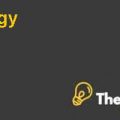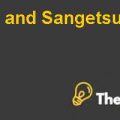Work Flow at Colorscope
The workflow started at Colorscope from receiving of orders on the phone call and then recording the specification that may cause some data to be misinterpreted or erroneously recorded causing rework when the job is fully completed and returned from the quality control department. Since, receiving and recording of the job is the first stage of work and if there is any mistake at this stage requiring rework then all the processes have to be repeated. In the next process, templates of picture were created by physically cutting & pasting the graphs, images and text.
The scanning process was done using three laser scanners, and the job was sent to the assembly department once the scanning process is completed. The assembly was done using the old-fashioned and obsolete technology resulting in inferior quality of output and increased cost. Consequently, new technology should be brought in to remain competitive in the printing industry and monitoring of work should be carried out to suggest the improvements are required.
Pricing Strategy
Costing of work done at each process has to be analyzed and costing system such as Activity Based Costing should be used while allocating the overhead cost such as rent cost to each process. Activity/capacity responsible for incurring the cost (cost driver) should be used to allocate the cost between each process. Since, rent expenses directly relate to floor space, hence, it will be reasonable to allocate rent on the basis of floor area occupied by each department.
Cost per job needs to be calculated as per Appendix-A based on activity based costing, and loss making jobs should be evaluated further. In this evaluation, cost incurred as a result of in-house error and cost associated with idle time and space should not be considered as these are abnormal losses. New technology should be brought in to minimize the depreciation cost due to the use of old equipments.
This is noted as part of the job costing process that almost all the loss-making jobs have been re-worked either due to changes in customer specification or in-house errors. This should be evaluated that is the policy of additional charges on rework requested by customer and the customer should be told in advance that later changes in work will require additional cost to be paid. Frequency of re-work should be minimized. As per the Appendix-B, 8% of the jobs were re-worked during June1996 in the job preparation process and 15% in the rest of the three processes.
Colorscope needs to analyze the cost per unit or cost per page, now Colorscope has $600 price per page. After analysis, sales price per page of Colorscope is lower than the cost per page because of high rent cost about 13000 rooms are idle. Colorscope should increase sales price per unit or reduce cost per unit by decreasing the cost of rent.
Accounting and Control System
Activity Based Costing can be used as an accounting system for arriving at the base price of each job done justifying the work against cost consumed by each process, so that each process is evaluated against its performance and cost consumed.
Control system should be in place for proper and smooth operations at all the stages of production processes. The work flow at the Colorscope is well-standardized, but it is not documented. It should be documented and communicated at all levels of production processes, so there is no point in deviation from the standard procedures. Customer specification should also be sent to each production process so that it is matched with the work completed at each step that will again minimizing the chances of re-work.
Since, all the staff is cross-trained and can perform the activities of all the process involved without the need of any additional training; hence, at every stage the job should go through a quality control process before it is forwarded to the next process, which will minimize the chances of re-work suggested by the quality control division at the final stage.
As part of the internal control system, supervisory controls should be introduced at all stages of processes in order to assess the performance of each and every process that is involved in performing the job and based on that supervision, corrective actions should be implemented.................................
This is just a sample partial case solution. Please place the order on the website to order your own originally done case solution.














